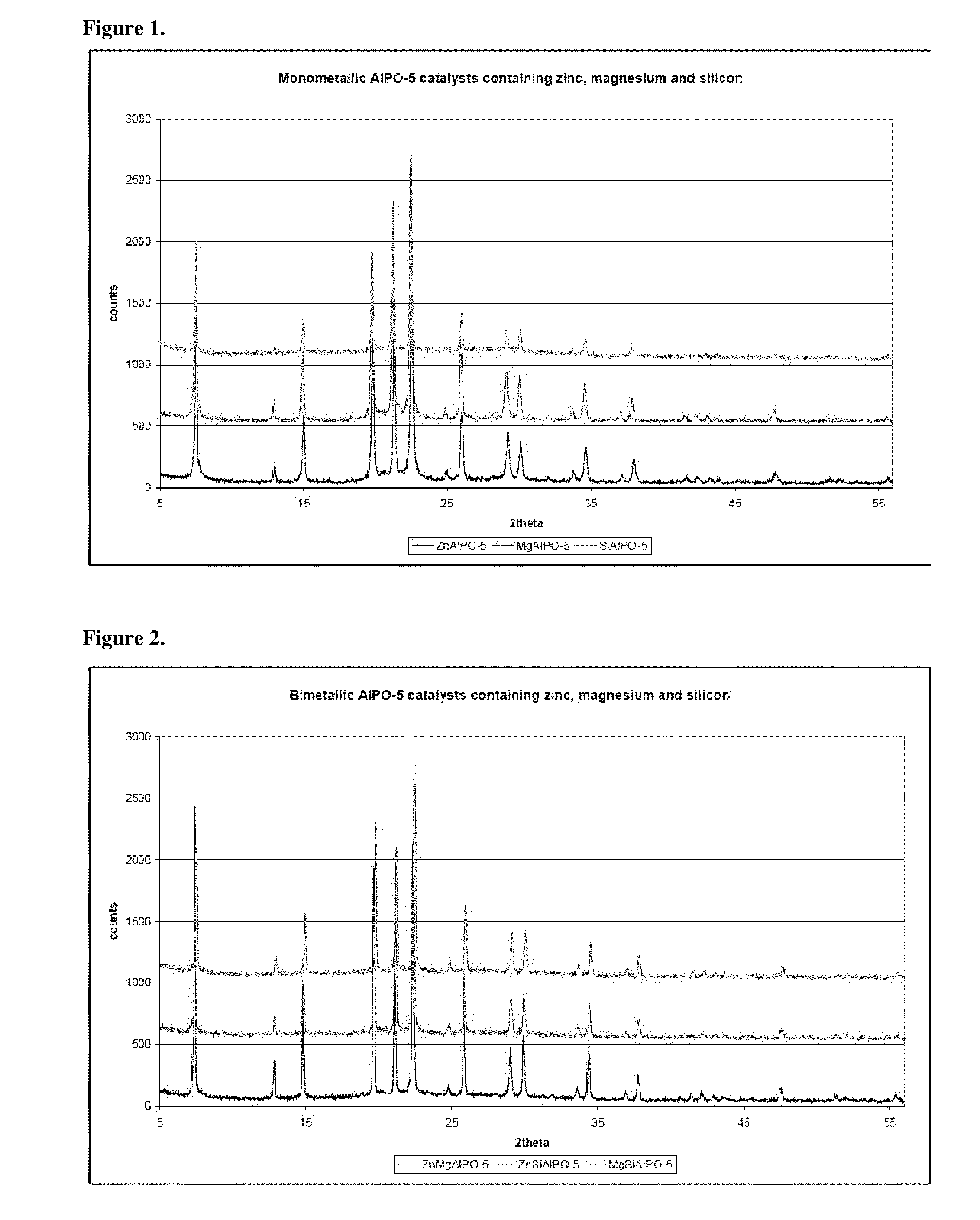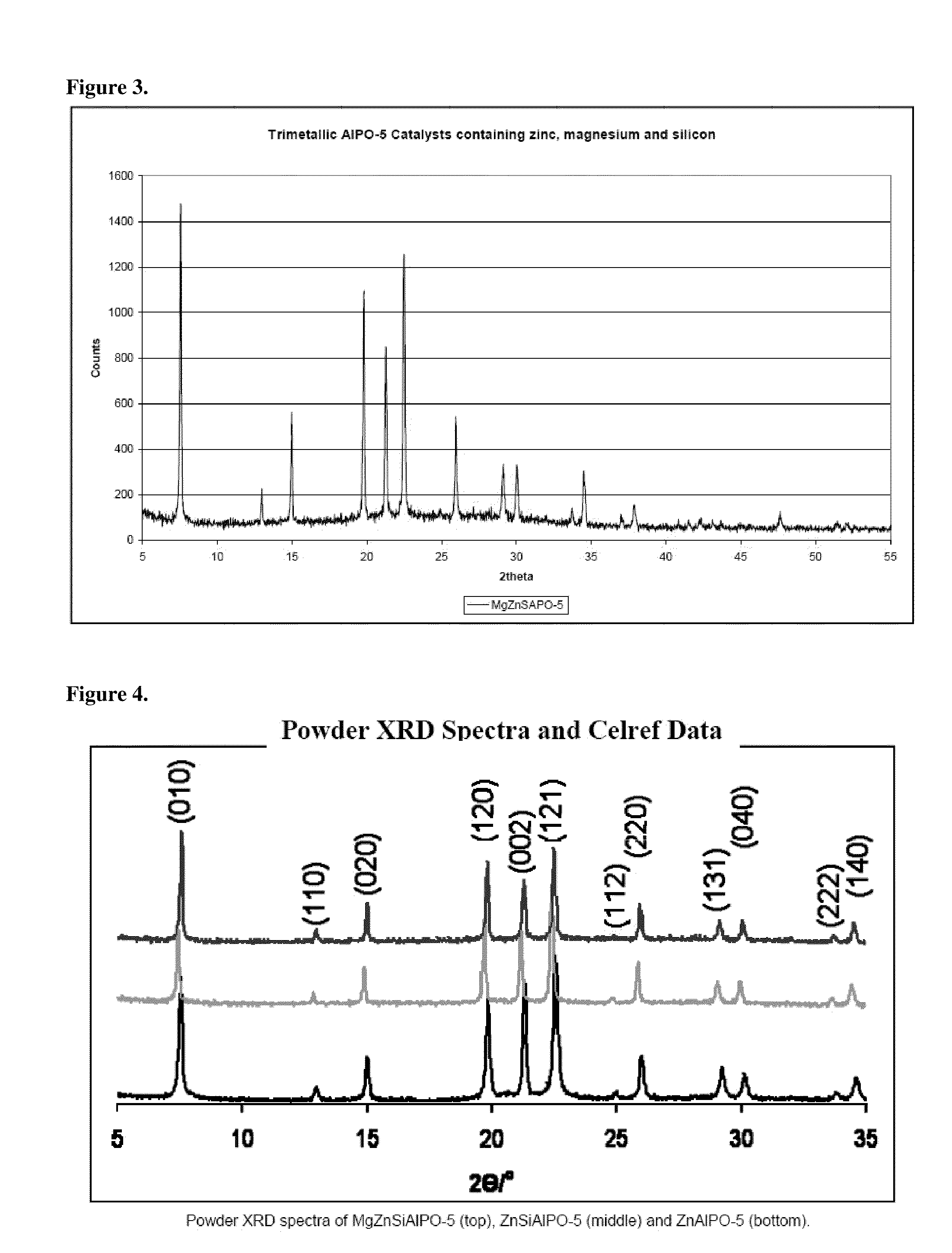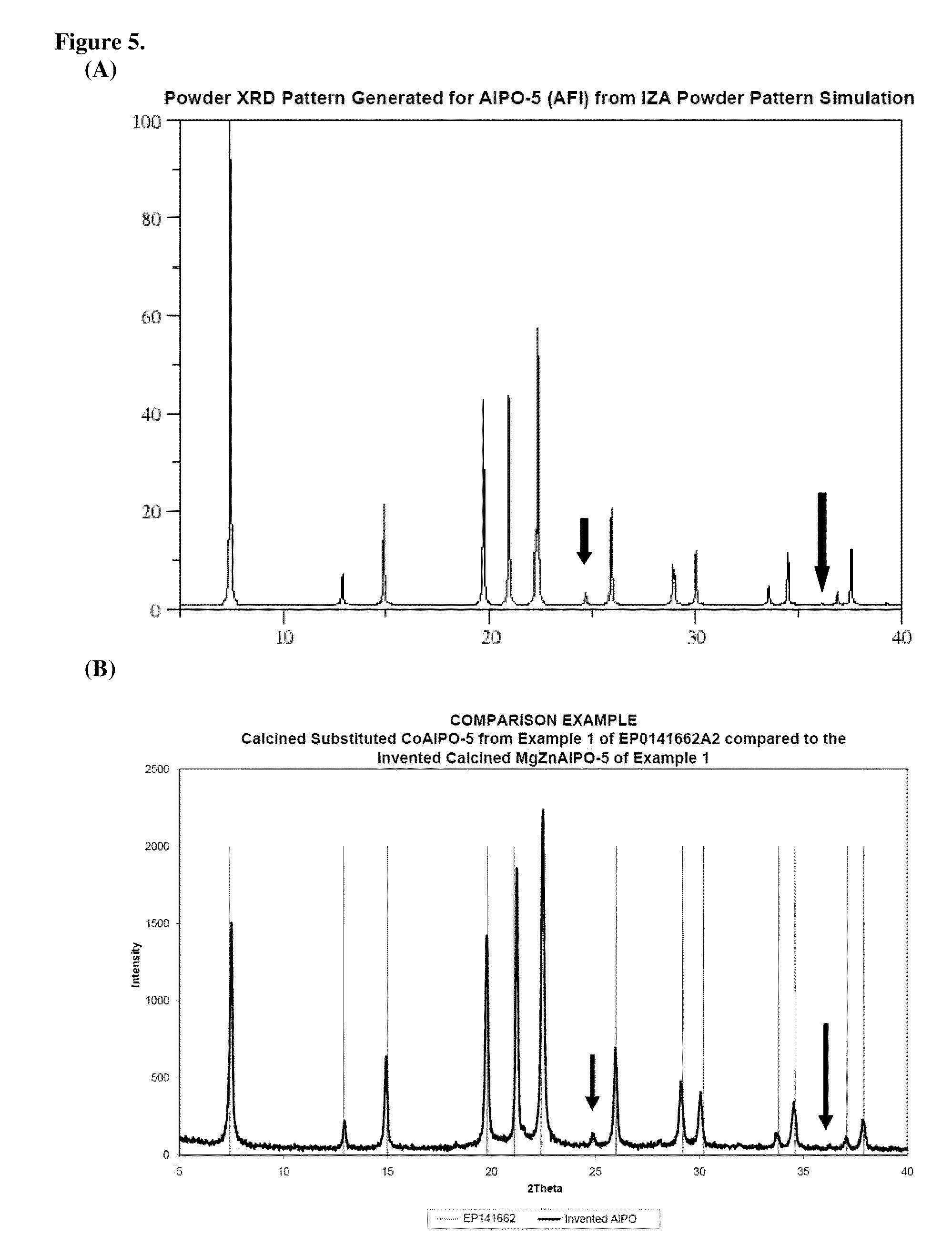Catalytic dehydration of alcohols using phase pure single- and multi-site heterogeneous catalysts
a catalyst and alcohol technology, applied in the field of new aluminophosphate (alpo or alpo4) catalysts, can solve the problems of oxidizing alcohol into polluting carbon dioxide, yield and selectivity achieved to date are not encouraging, etc., and achieve high conversion and selectivity, high phase purity
- Summary
- Abstract
- Description
- Claims
- Application Information
AI Technical Summary
Benefits of technology
Problems solved by technology
Method used
Image
Examples
example 1
Procedure for Making a Mono-Metallic Substituted AlPO
[0085]Synthesis of MgIIZnIIAlPO-5. Phosphoric acid (9.601 g, 85 wt % aqueous solution, Aldrich) was diluted with H2O (10 g) in a Teflon beaker and stirred for 5 minutes. Teflon was used because the reaction vessel should be inert to the leaching of undesired metals, such as iron, into the AlPO structure. Aluminium hydroxide (4.071 g, 52.225 mmol, Al(OH)3.H2O, Aldrich) was added slowly to the beaker and stirred at high speed (between 1000 and 1,200 rpm) for 10 minutes. Magnesium acetate tetrahydrate (0.357 g, 1.668 mmol, Mg(C2H3OO)2.4H2O, Aldrich, 99%) and zinc acetate (0.306 g, 1.667 mmol, Zn(C2H3OO)2, Aldrich, 99%) were measured into separate glass beakers and dissolved in 10 g of H2O each. The diluted metal precursors were then added dropwise simultaneously to the Teflon beaker. The mixture was allowed to stir at high speed (between 1000 and 1200 rpm) for 30 minutes before the SDA, methyldicyclohexylamine (MDCHA), (8.682 g, 44.4...
example 2
Procedure for Making a Bi-Metallic Substituted AlPO
[0087]Synthesis of MgIIZnIISiIVAlPO-5. Phosphoric acid (5.441 g, 85 wt % aqueous solution, Aldrich) was diluted with H2O (10 g) in a Teflon beaker and stirred for 5 minutes. Teflon was used because the reaction vessel should be inert to the leaching of undesired metals, such as iron, into the AlPO structure. Aluminium hydroxide (4.331 g, 55.56 mmol, Al(OH)3.H2O, Aldrich) was added slowly to the beaker and stirred at high speed (between 1,000 and 1,200 rpm) for 10 minutes. Magnesium acetate tetrahydrate (0.357 g, 1.668 mmol, Mg(C2H3OO)2.4H2O, Aldrich, 99%) and zinc acetate (0.306 g, 1.668 mmol, Zn(C2H3OO)2, Aldrich, 99%) were measured into separate glass beakers and dissolved in 10 g of H2O each. The diluted metal precursors were then added dropwise simultaneously with dry fumed silica (0.677 g, 11.117 mmol, Aldrich) to the Teflon beaker. The mixture was allowed to stir at high speed (between 1000 and 1200 rpm) for 30 minutes before ...
example 3
ZnIIAlPO-5
[0089]
MassRMMMolesRatioM LoadingSilica LoadingTemp (° C.)Al(OH)34.32177.950.05541.0000.02920H3PO4 (85%)7.23497.930.06271.1332.9%0190Silica060.0900.000Mg acetate•4H2O0214.4600.000Zn Acetate0.306183.460.00160.030MDCHA8.5195.350.04350.785H2O70183.888870.155
PUM
| Property | Measurement | Unit |
|---|---|---|
| Temperature | aaaaa | aaaaa |
| Temperature | aaaaa | aaaaa |
| Temperature | aaaaa | aaaaa |
Abstract
Description
Claims
Application Information
 Login to View More
Login to View More - R&D
- Intellectual Property
- Life Sciences
- Materials
- Tech Scout
- Unparalleled Data Quality
- Higher Quality Content
- 60% Fewer Hallucinations
Browse by: Latest US Patents, China's latest patents, Technical Efficacy Thesaurus, Application Domain, Technology Topic, Popular Technical Reports.
© 2025 PatSnap. All rights reserved.Legal|Privacy policy|Modern Slavery Act Transparency Statement|Sitemap|About US| Contact US: help@patsnap.com



